Martin Knoche
Tackling Face Verification Edge Cases: In-Depth Analysis and Human-Machine Fusion Approach
Apr 18, 2023Abstract:Nowadays, face recognition systems surpass human performance on several datasets. However, there are still edge cases that the machine can't correctly classify. This paper investigates the effect of a combination of machine and human operators in the face verification task. First, we look closer at the edge cases for several state-of-the-art models to discover common datasets' challenging settings. Then, we conduct a study with 60 participants on these selected tasks with humans and provide an extensive analysis. Finally, we demonstrate that combining machine and human decisions can further improve the performance of state-of-the-art face verification systems on various benchmark datasets. Code and data are publicly available on GitHub.
Explainable Model-Agnostic Similarity and Confidence in Face Verification
Nov 24, 2022



Abstract:Recently, face recognition systems have demonstrated remarkable performances and thus gained a vital role in our daily life. They already surpass human face verification accountability in many scenarios. However, they lack explanations for their predictions. Compared to human operators, typical face recognition network system generate only binary decisions without further explanation and insights into those decisions. This work focuses on explanations for face recognition systems, vital for developers and operators. First, we introduce a confidence score for those systems based on facial feature distances between two input images and the distribution of distances across a dataset. Secondly, we establish a novel visualization approach to obtain more meaningful predictions from a face recognition system, which maps the distance deviation based on a systematic occlusion of images. The result is blended with the original images and highlights similar and dissimilar facial regions. Lastly, we calculate confidence scores and explanation maps for several state-of-the-art face verification datasets and release the results on a web platform. We optimize the platform for a user-friendly interaction and hope to further improve the understanding of machine learning decisions. The source code is available on GitHub, and the web platform is publicly available at http://explainable-face-verification.ey.r.appspot.com.
Octuplet Loss: Make Face Recognition Robust to Image Resolution
Jul 14, 2022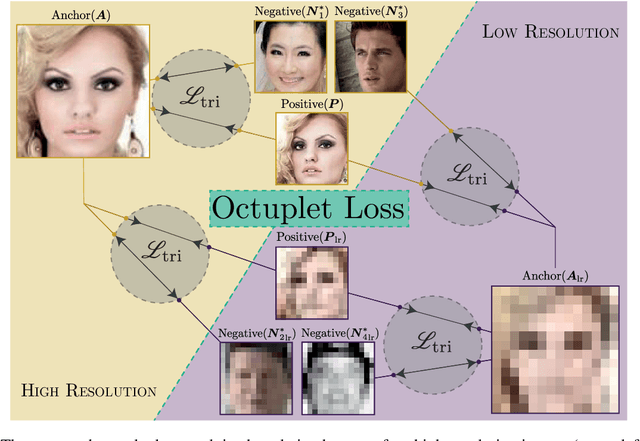
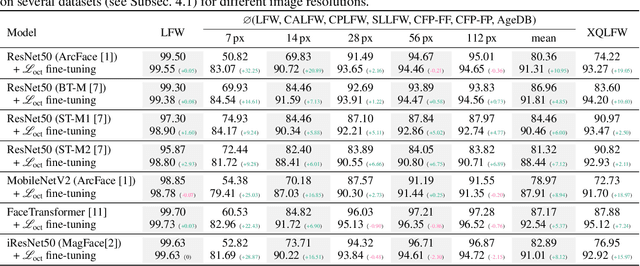

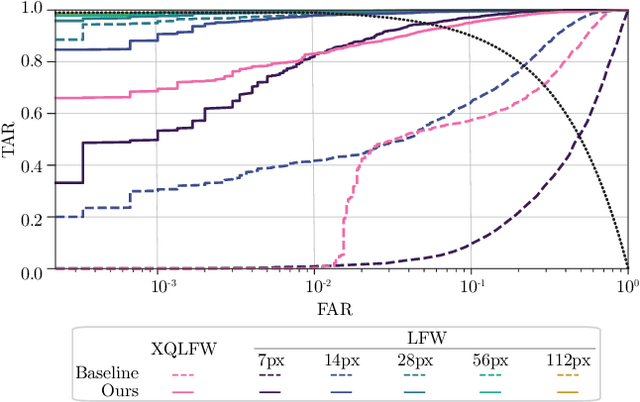
Abstract:Image resolution, or in general, image quality, plays an essential role in the performance of today's face recognition systems. To address this problem, we propose a novel combination of the popular triplet loss to improve robustness against image resolution via fine-tuning of existing face recognition models. With octuplet loss, we leverage the relationship between high-resolution images and their synthetically down-sampled variants jointly with their identity labels. Fine-tuning several state-of-the-art approaches with our method proves that we can significantly boost performance for cross-resolution (high-to-low resolution) face verification on various datasets without meaningfully exacerbating the performance on high-to-high resolution images. Our method applied on the FaceTransformer network achieves 95.12% face verification accuracy on the challenging XQLFW dataset while reaching 99.73% on the LFW database. Moreover, the low-to-low face verification accuracy benefits from our method. We release our code to allow seamless integration of the octuplet loss into existing frameworks.
Face Morphing: Fooling a Face Recognition System Is Simple!
May 27, 2022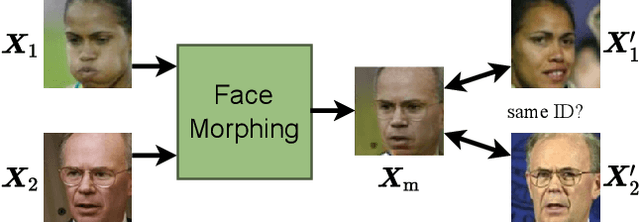


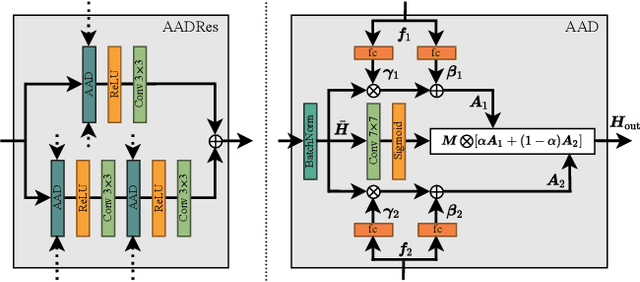
Abstract:State-of-the-art face recognition (FR) approaches have shown remarkable results in predicting whether two faces belong to the same identity, yielding accuracies between 92% and 100% depending on the difficulty of the protocol. However, the accuracy drops substantially when exposed to morphed faces, specifically generated to look similar to two identities. To generate morphed faces, we integrate a simple pretrained FR model into a generative adversarial network (GAN) and modify several loss functions for face morphing. In contrast to previous works, our approach and analyses are not limited to pairs of frontal faces with the same ethnicity and gender. Our qualitative and quantitative results affirm that our approach achieves a seamless change between two faces even in unconstrained scenarios. Despite using features from a simpler FR model for face morphing, we demonstrate that even recent FR systems struggle to distinguish the morphed face from both identities obtaining an accuracy of only 55-70%. Besides, we provide further insights into how knowing the FR system makes it particularly vulnerable to face morphing attacks.
Cross-Quality LFW: A Database for Analyzing Cross-Resolution Image Face Recognition in Unconstrained Environments
Aug 26, 2021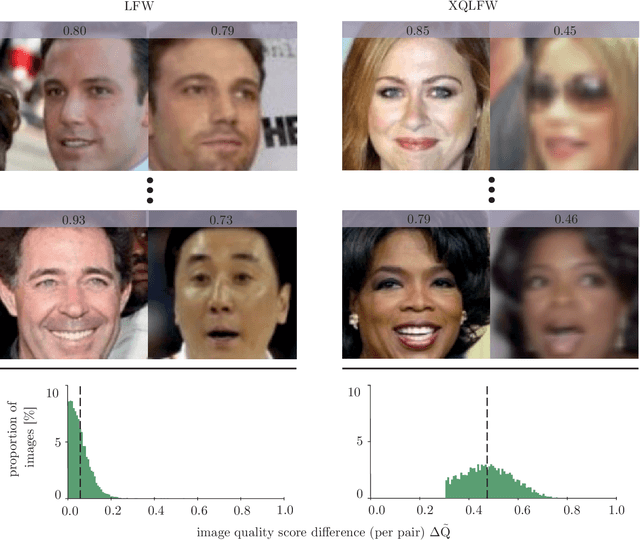

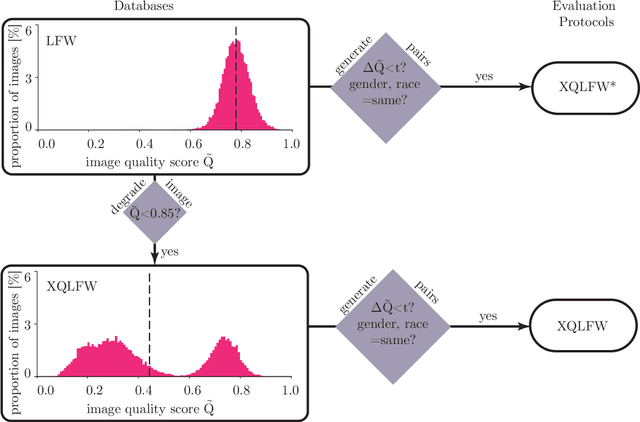

Abstract:Real-world face recognition applications often deal with suboptimal image quality or resolution due to different capturing conditions such as various subject-to-camera distances, poor camera settings, or motion blur. This characteristic has an unignorable effect on performance. Recent cross-resolution face recognition approaches used simple, arbitrary, and unrealistic down- and up-scaling techniques to measure robustness against real-world edge-cases in image quality. Thus, we propose a new standardized benchmark dataset and evaluation protocol derived from the famous Labeled Faces in the Wild (LFW). In contrast to previous derivatives, which focus on pose, age, similarity, and adversarial attacks, our Cross-Quality Labeled Faces in the Wild (XQLFW) maximizes the quality difference. It contains only more realistic synthetically degraded images when necessary. Our proposed dataset is then used to further investigate the influence of image quality on several state-of-the-art approaches. With XQLFW, we show that these models perform differently in cross-quality cases, and hence, the generalizing capability is not accurately predicted by their performance on LFW. Additionally, we report baseline accuracy with recent deep learning models explicitly trained for cross-resolution applications and evaluate the susceptibility to image quality. To encourage further research in cross-resolution face recognition and incite the assessment of image quality robustness, we publish the database and code for evaluation.
Image Resolution Susceptibility of Face Recognition Models
Jul 08, 2021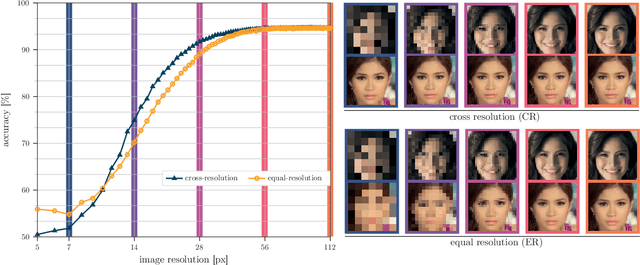
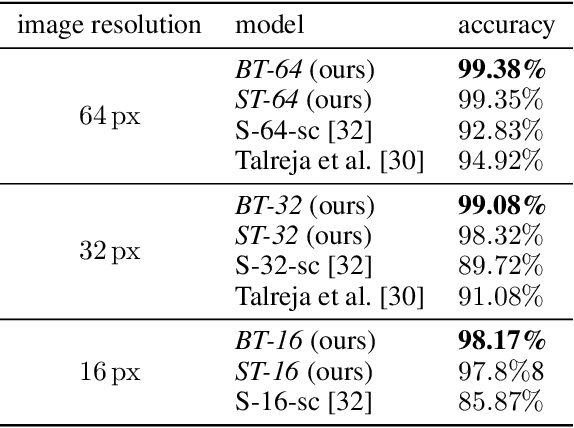
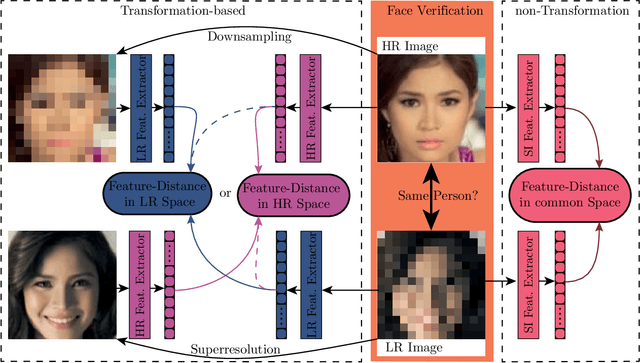

Abstract:Face recognition approaches often rely on equal image resolution for verification faces on two images. However, in practical applications, those image resolutions are usually not in the same range due to different image capture mechanisms or sources. In this work, we first analyze the impact of image resolutions on the face verification performance with a state-of-the-art face recognition model. For images, synthetically reduced to $5\, \times 5\, \mathrm{px}$ resolution, the verification performance drops from $99.23\%$ increasingly down to almost $55\%$. Especially, for cross-resolution image pairs (one high- and one low-resolution image), the verification accuracy decreases even further. We investigate this behavior more in-depth by looking at the feature distances for every 2-image test pair. To tackle this problem, we propose the following two methods: 1) Train a state-of-the-art face-recognition model straightforward with $50\%$ low-resolution images directly within each batch. \\ 2) Train a siamese-network structure and adding a cosine distance feature loss between high- and low-resolution features. Both methods show an improvement for cross-resolution scenarios and can increase the accuracy at very low resolution to approximately $70\%$. However, a disadvantage is that a specific model needs to be trained for every resolution-pair ...
Attention-based Partial Face Recognition
Jun 14, 2021
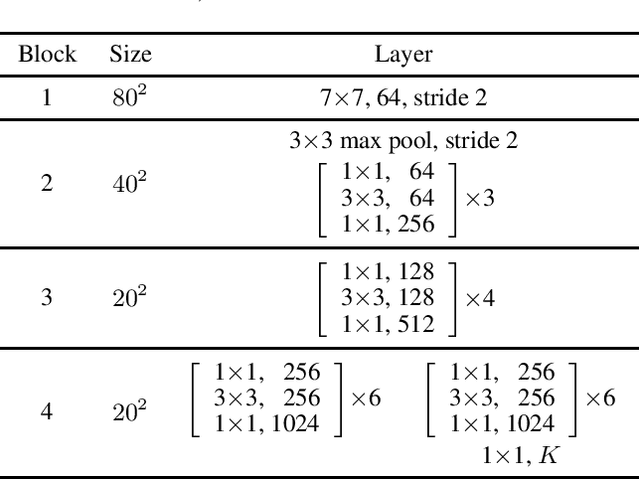
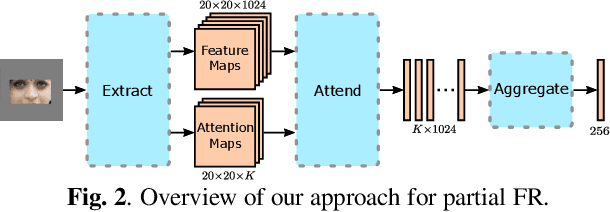
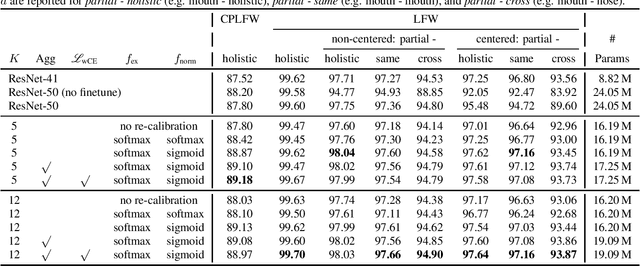
Abstract:Photos of faces captured in unconstrained environments, such as large crowds, still constitute challenges for current face recognition approaches as often faces are occluded by objects or people in the foreground. However, few studies have addressed the task of recognizing partial faces. In this paper, we propose a novel approach to partial face recognition capable of recognizing faces with different occluded areas. We achieve this by combining attentional pooling of a ResNet's intermediate feature maps with a separate aggregation module. We further adapt common losses to partial faces in order to ensure that the attention maps are diverse and handle occluded parts. Our thorough analysis demonstrates that we outperform all baselines under multiple benchmark protocols, including naturally and synthetically occluded partial faces. This suggests that our method successfully focuses on the relevant parts of the occluded face.
A Multi-Task Comparator Framework for Kinship Verification
Jun 02, 2020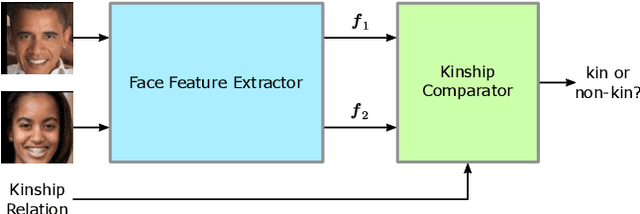
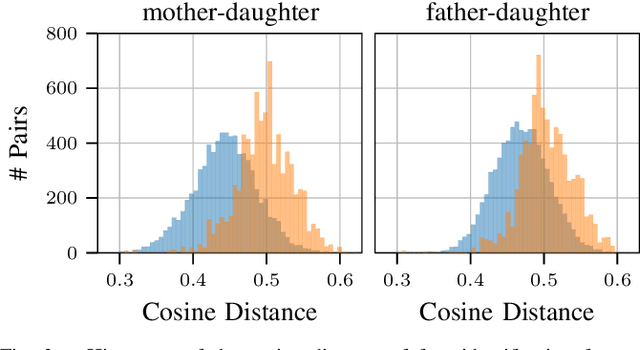

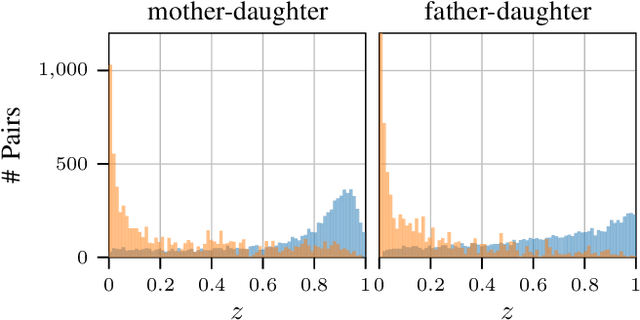
Abstract:Approaches for kinship verification often rely on cosine distances between face identification features. However, due to gender bias inherent in these features, it is hard to reliably predict whether two opposite-gender pairs are related. Instead of fine tuning the feature extractor network on kinship verification, we propose a comparator network to cope with this bias. After concatenating both features, cascaded local expert networks extract the information most relevant for their corresponding kinship relation. We demonstrate that our framework is robust against this gender bias and achieves comparable results on two tracks of the RFIW Challenge 2020. Moreover, we show how our framework can be further extended to handle partially known or unknown kinship relations.
 Add to Chrome
Add to Chrome Add to Firefox
Add to Firefox Add to Edge
Add to Edge